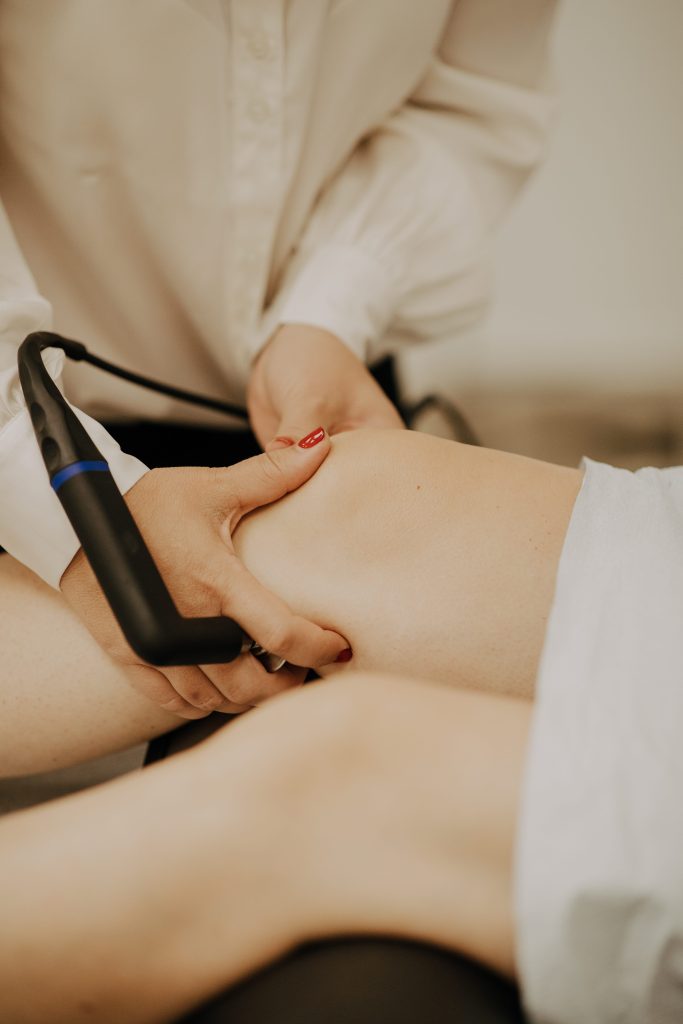Pre- and Post Surgery Physical Therapy in Chicago
Our experienced Physical Therapists help you bounce back from orthopedic surgery faster and reducing pain and complications.
Chicago Therapy for Pre- and Post Orthopedic Surgery
- Professional
- Personalized
- Precise
Our team of skilled physical therapists can work with you both before and after your surgery to ensure the best possible outcome.
Before your surgery, we’ll help you prepare your body for the procedure by strengthening the muscles surrounding your hip or knee joint. This not only helps to speed up your recovery time but can also reduce the risk of complications during and after surgery.
We’ll design a personalized exercise plan for you that focuses on increasing your range of motion, improving your flexibility, and building up your muscle strength. By doing this, you’ll be in the best possible shape to handle the surgery and any rehabilitation that comes afterward.
After your surgery, physical therapy can help to speed up your recovery and get you back to your normal activities as quickly as possible. Our team will work with you to create a custom rehabilitation plan that’s tailored to your specific needs and goals. We’ll guide you through exercises that help to rebuild strength and flexibility in the joint, reduce pain and swelling, and improve your overall range of motion.
With our help, you’ll be able to return to your normal activities, such as walking, climbing stairs, or exercising, much faster than if you were to try to recover on your own. So if you’re looking for a way to enhance your recovery from hip, knee or ankle surgery, look no further than our team of skilled physical therapists.
Skillful & proven procedures for your recovery
We use a variety of modern tools and procedures to provide you with the best options to heal and revitalize your body.
INDIBA* Revitalize
Advance Core Physical Therapy & Wellness is the only licensed provider of INDIBA in Chicago. INDIBA® is the market leader in radio frequency treatments for reducing pain and accelerating the natural recovery of the body. The INDIBA device generates a safe, pain free, electromagnetic wave that introduces energy into the body. This causes bio-stimulation and a thermal effect, which complements your recovery and can improve results from your first treatment.
It involves using a handheld device that emits a high-frequency electrical current, which is applied to the skin and underlying tissues on the affected area/ pelvic floor region.
Treatment with INDIBA helps:
- Reduce incontinence, allowing for you to return to everyday life without the worry and inconvenience of leaking
- Improve the pelvic muscles ability to contract and relax, reducing pain
- Improve ejaculation control by ensuring the pelvic area is toned
- Manage chronic pelvic pain
During an Indiba therapy session, your PT will apply the device to the skin in the pelvic floor area, and may use a variety of techniques to target specific areas of tension or dysfunction. The therapy is typically painless and may be combined with other forms of pelvic floor rehabilitation, such as exercise or manual therapy.
Dry Needling
Dry needling is a technique involving inserting thin, solid needles into the skin and underlying tissues, with the goal of reducing pain and improving musculoskeletal function. We insert the needles into these areas, with the goal of creating a local twitch response and triggering a release of tension or restriction in the surrounding tissues.
Dry needling is used to treat a range of musculoskeletal conditions, including neck and back pain, headaches, plantar fasciitis, and sports injuries. We are certified in dry needling with many more certifications in orthopedic and pelvic floor rehabilitation
used in physical therapy.
Dr Moise, Master Dry Needling Certification
Visceral Manipulation
Visceral Manipulation is based on the premise that movement is essential for life and any restriction within the body will affect our health. Visceral Manipulation (often called Organ Mobilization) is a hands-on gentle release of tension to the structures within the body, organ, fascia, nerves, blood vessels, as well as emotional tension.
During the procedure, your therapist will use gentle manual pressure and specific movements to improve organ mobility, enhance the body’s natural healing process, and relieve discomfort.
AlterG Treadmill Therapy
AlterG innovative Anti-Gravity Treadmill™ technology empowers people to move in new ways and without pain – to recover mobility, improve wellness, and enhance physical performance.
The AlterG is a specialized treadmill used in rehabilitation settings that allows individuals to exercise with a reduced amount of weight-bearing on their lower extremities. This can be particularly beneficial for individuals who are recovering from lower limb injuries or surgeries, or who have conditions that make weight-bearing exercise difficult or painful.
How does it work?
The AlterG works by enclosing the lower body in an airtight chamber that creates a lift force, which reduces the amount of weight-bearing on the legs. The amount of lift force can be adjusted to match the individual's needs and goals, allowing for a gradual increase in weight-bearing over time.
Real-Time Ultrasound
Pelvic real-time ultrasound (RTUS) is a diagnostic and treatment tool often used in pelvic floor rehabilitation. The technique involves the use of a specialized ultrasound machine and a small probe that is inserted into the vagina or rectum, allowing for real-time visualization of the pelvic organs and musculature.
We use pelvic RTUS to evaluate the function of the pelvic floor muscles, including their ability to contract and relax, as well as the position and function of the bladder, uterus, and other pelvic organs. Our PTs also use it to guide treatment, such as biofeedback or pelvic floor muscle exercises, by allowing us to see the muscles contracting in real-time on a screen.
Low-Pressure Fitness
Low Pressure Fitness (LPF) is a therapeutic exercise approach that combines breathing techniques, postural re-education, and core muscle training to improve the function and health of the pelvic floor muscles, core muscles, and respiratory system. We use a specialized breathing device called an AirBelt to facilitate proper breathing mechanics and support the core muscles during exercise.
LPF improves the strength and coordination of the pelvic floor and core muscles, improves breathing function, and reduces symptoms such as urinary incontinence, pelvic pain, and lower back pain.
The PTs at Advance Core are certified in LPF, and can ensure a safe and effective treatment. The specific treatment plan will depend on your needs and condition, and may involve ongoing maintenance exercises to maintain the benefits of therapy.
Dr. Moise is a certified LPF physical therapist, trained by Dr. Tamara Rial (the developer of the treatment program.)


Frequently Asked Ortho PT Questions
The timing of when you can start physical therapy after hip, knee or ankle surgery will depend on the type of surgery you have had, as well as the recommendations of your surgeon and physical therapist. In general, you should expect to begin physical therapy within a few days to a few weeks following your surgery.
Your surgeon will likely provide you with specific instructions on when to begin physical therapy, which may vary depending on the type and extent of your surgery, as well as any other medical conditions you may have. They may also provide guidelines for the frequency and duration of your physical therapy sessions.
Our physical therapists will work with you to develop a personalized treatment plan based on your individual needs and goals. They may use a variety of techniques and exercises to help you regain strength, mobility, and range of motion in your hips, knees, or ankles.
In most cases, physical therapy is recommended after hip, knee, and ankle surgery to help promote healing and restore normal function.
Post-surgery PT improves circulation, reduces swelling, and prevents scar tissue from forming. It also helps improve range of motion, strength, and flexibility in the hips, knees, ankle, and surrounding muscles.
Physical Therapy following surgery will help you get back on your feet faster and with less pain, and can help you regain the mobility and function you need to return to your normal activities.
Physical therapy can be an effective way to prevent surgery in some cases. By working with a physical therapist, you can strengthen muscles, improve range of motion, and reduce pain and other symptoms. This can help to alleviate the underlying issues that may have led to the need for surgery in the first place.
For example, if you’re experiencing knee pain due to a torn meniscus, physical therapy can help to strengthen the muscles surrounding the knee joint, improve flexibility and range of motion, and reduce inflammation and pain. With consistent physical therapy, it is possible to improve these symptoms enough to avoid the need for surgery.
Similarly, physical therapy can be helpful for individuals with back pain, neck pain, and other musculoskeletal issues. By working with a physical therapist to improve posture, strengthen muscles, and reduce pain and inflammation, you can often avoid the need for more invasive treatments like surgery.

Get Started Today
Meet your PT provider
Schedule an appointment and meet your Chicago Physical Therapist who will help you put together a PT plan.
Follow the customized plan
The physical therapy plan we create for you will ensure you get better and start feeling results, fast.
Reach your goals
Forget about embarrassment, pain, or holding back. Get back to living your life — stronger than ever.

